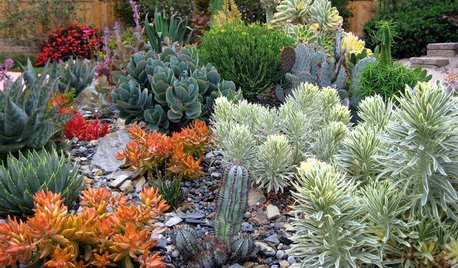Tips? Growing under lights for transplants
canuckistani
15 years ago
Related Stories

FARM YOUR YARDHow to Grow Vegetables in Containers
Get glorious vegetables and fruits on your patio with a pro’s guidance — including his personal recipe for potting mix
Full Story
WINTER GARDENINGExtend Your Growing Season With a Cold Frame in the Garden
If the sun's shining, it might be time to sow seeds under glass to transplant or harvest
Full Story
EDIBLE GARDENSHow to Grow Your Own Sweet Summer Crops
This guide will help any gardener get started on growing the freshest warm-season veggies and berries for summer
Full Story
SPRING GARDENINGHow to Grow a Rose Garden in Pots
Everything can come up roses, even without a plot of soil in sight. This step-by-step guide to growing roses in containers shows you how
Full Story
MOST POPULARSummer Crops: How to Grow Sunflowers
Savor snack-tastic sunflower seeds once the radiant blooms have faded — if the birds have saved you any, that is
Full Story
EDIBLE GARDENSSummer Crop: How to Grow Blueberries
Plant blueberries in spring or fall for garden beauty through three seasons — and a sweet superfood in summer
Full Story
EDIBLE GARDENSSummer Crops: How to Grow Tomatoes
Plant tomato seedlings in spring for one of the best tastes of summer, fresh from your backyard
Full Story
GARDENING GUIDESA Beginner’s Guide to Growing Succulents
Their easy-care reputation is well-deserved, but a little TLC will turn succulents into star plants
Full Story
SUMMER GARDENINGHow to Grow Basil
Bright color, quick growth and endless uses for cooking make this summer annual a winner in the garden or a pot
Full Story
EDIBLE GARDENSSummer Crops: How to Grow Squash
Almost foolproof and with cheerful flowers, squash comes in a wide range of varieties to plant in spring
Full StoryMore Discussions






hautions11
canuckistaniOriginal Author
Related Professionals
Maple Valley Landscape Architects & Landscape Designers · Salem Landscape Architects & Landscape Designers · Willowick Landscape Architects & Landscape Designers · Brookfield Landscape Contractors · Deerfield Beach Landscape Contractors · Mastic Beach Landscape Contractors · Sammamish Landscape Contractors · Overlea Fence Contractors · Cherry Hill Fence Contractors · Fort Lauderdale Fence Contractors · Lincolnwood Fence Contractors · Northlake Fence Contractors · Oro Valley Fence Contractors · Cincinnati Roofing & Gutters · The Colony Roofing & Guttershautions11
canuckistaniOriginal Author
canuckistaniOriginal Author
wordwiz